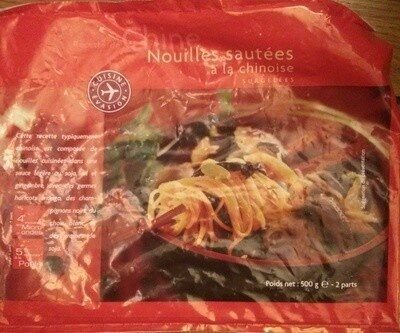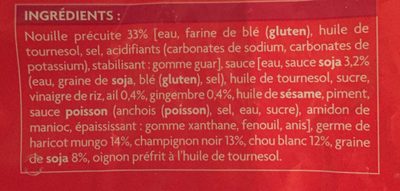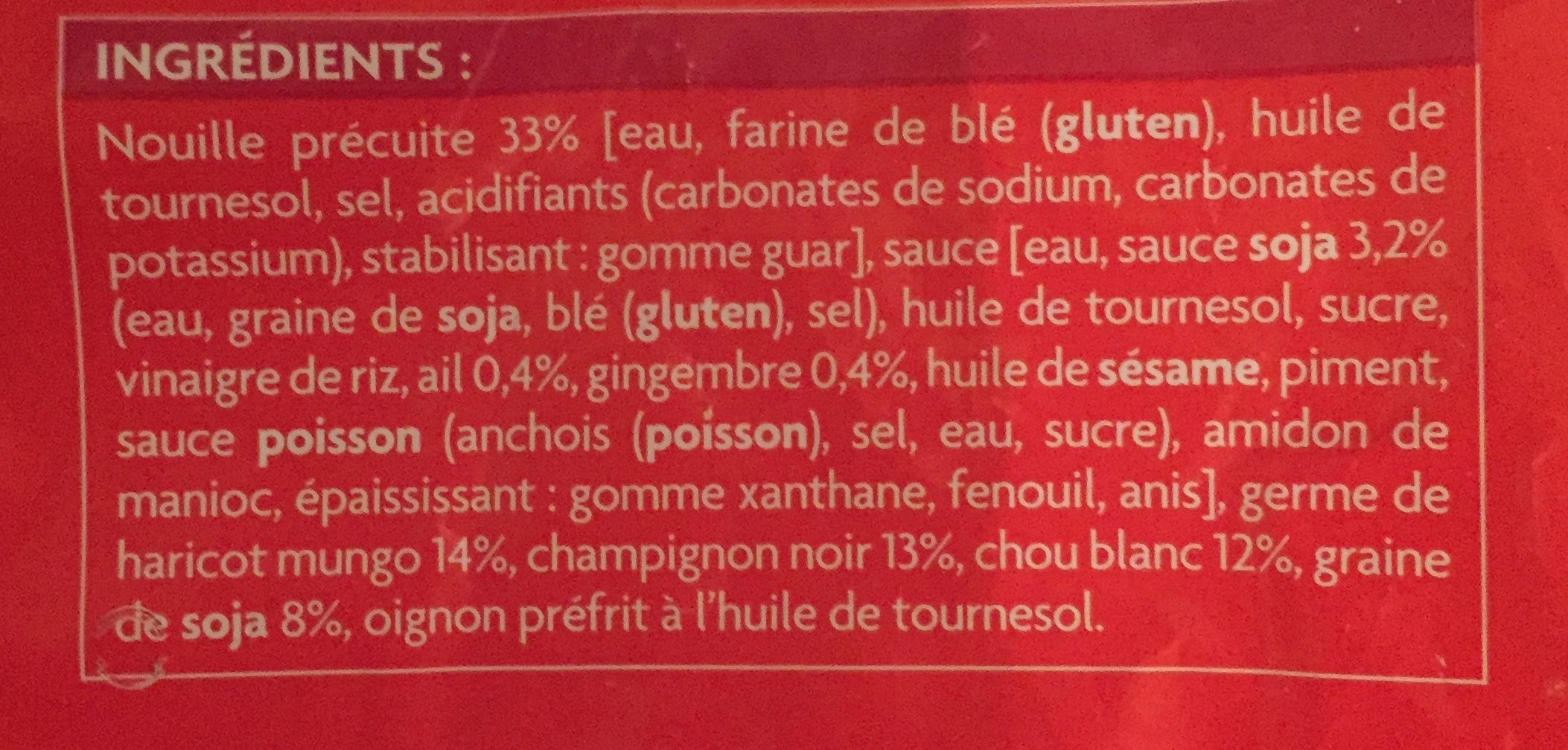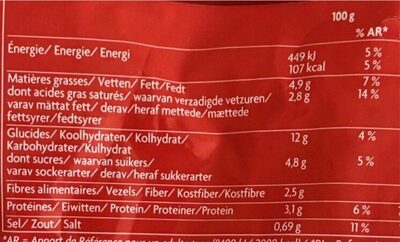Nouilles sautées à la chinoise Surgelées - Picard - 500 g
This product page is not complete. You can help to complete it by editing it and adding more data from the photos we have, or by taking more photos using the app for Android or iPhone/iPad. Thank you!
×
Barcode: 3270160396597 (EAN / EAN-13)
Common name: Légumes 51%, nouilles précuites 33% et sauce soja gingembre 16%, surgelés
Quantity: 500 g
Brands: Picard, Cuisine évasion
Categories: Plant-based foods and beverages, Plant-based foods, Cereals and potatoes, Cereals and their products, Frozen foods, Meals, Pastas, Noodles, Chinese noodles, Frozen ready-made meals
Manufacturing or processing places: Belgique
Link to the product page on the official site of the producer: https://www.picard.fr/produits/nouilles-...
Stores: Picard
Countries where sold: France
Matching with your preferences
Environment
Packaging
Transportation
Report a problem
Data sources
Product added on by teolemon
Last edit of product page on by packbot.
Product page also edited by date-limite-app, desan, ecoscore-impact-estimator, foodvisor, kiliweb, numero-8, openfoodfacts-contributors, quechoisir, sebleouf, stephane, yuka.UUtzcUZha0JoTjhieGZReThUNk00ZEI2K0thaldrMmxGZEF5SVE9PQ, yuka.VGFNR00vc29wT0VIa3NRVDBSNk5wL05ZdzZPbGJIaVlEL1FQSVE9PQ, yuka.ZEx3Nk92OVp2UDRPaGNjZzdrelAxUEI1bklYekRGSzNKKzBESWc9PQ, yuka.sY2b0xO6T85zoF3NwEKvlkFacIXnum_dCRDunG2P1tKNdpXKP-By57LYbao, yuka.sY2b0xO6T85zoF3NwEKvlldCbcTQjzHFKkP5l2ey547QHpm2Z-Mpx6XQOas, yuka.sY2b0xO6T85zoF3NwEKvlmsfc4X58jT0HDnVlkmJl-eBI4zTa9Zz5qrEYqs.










